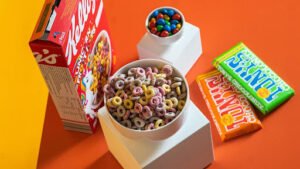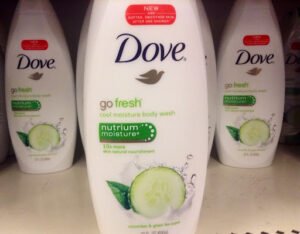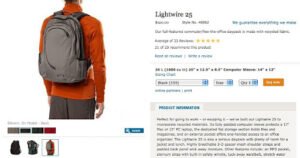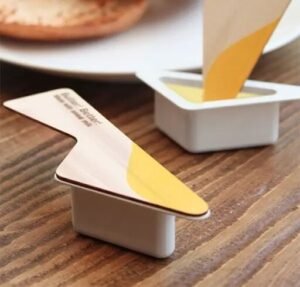In today’s crowded marketplace, capturing customers’ attention can be a formidable challenge. Storytelling through packaging design offers a unique solution, transforming ordinary boxes into powerful tools that connect with consumers on an emotional level. By embedding a narrative into your packaging, you differentiate your product, build brand loyalty, and create lasting impressions.
In this blog, we’ll dive into the following:
- Why Storytelling Through Packaging Design Matters
- The Elements of Storytelling Through Packaging Design
- Examples of Storytelling Through Packaging Design
- Tips for Creating a Story-Driven Packaging Design
- Beyond the Basics: Engaging Customers with Interactive Storytelling
- The Power of User-Generated Content (UGC)
- The Sensory Experience: Engaging More Than Sight
- From Shelf to Sustainability: Storytelling for Eco-Conscious Consumers
Let’s get straight to it!
Why Storytelling Through Packaging Design Matters
Think about it: packaging is the first impression your product makes. It’s the silent salesperson on the shelf, enticing customers to pick it up and learn more. But with countless options vying for attention, how do you make yours stand out?
Storytelling through packaging design allows you to do just that. Here’s how:
- Builds Brand Identity: Packaging that tells a story reinforces your brand’s personality, values, and mission. Is your brand playful and whimsical? Sophisticated and luxurious? Your packaging design should reflect that.
- Creates Emotional Connection: People connect with stories. By weaving a narrative into your packaging, you can evoke emotions and create a lasting impression. This emotional connection can lead to brand loyalty and repeat purchases.
- Communicates Product Benefits: Packaging can be more than just a pretty face. Use it to tell the story of your product’s benefits creatively and engagingly. Highlight its sustainable sourcing, unique ingredients, or the craftsmanship behind its creation.
The Elements of Storytelling Through Packaging Design
So, how do you go about crafting a compelling story through your packaging design? Here are some key elements to consider:

- Visuals: Images and illustrations are powerful storytelling tools. Use them to showcase your product, depict its origin story, or evoke the emotions you want customers to feel.
- Typography: The fonts you choose can speak volumes. A playful script might convey a lighthearted brand, while a classic serif font could suggest heritage and quality.
- Color: Colors have strong psychological associations. Warm colors like red and orange create a sense of energy, while cool colors like blue and green evoke feelings of calmness.
- Texture: The way your packaging feels can add another layer to the story. A smooth, sleek surface might suggest luxury, while a textured cardboard box could convey a handmade quality.
- Material: The materials you choose can also tell a story. Sustainable packaging tells a story of environmental responsibility while using recycled materials might communicate a commitment to upcycling.
Examples of Storytelling Through Packaging Design
Let’s look at some real-world examples of brands using storytelling through packaging design:
- Tony’s Chocolonely: This chocolate bar brand uses bold colors and quirky illustrations to tell the story of their fight against unfair labor practices in the cocoa industry.

- Dove Body Wash: Their simple, elegant packaging with soft colors and calming imagery conveys a sense of self-care and pampering.

- Patagonia: Their use of recycled materials and rugged design speaks to their commitment to sustainability and outdoor adventure.

Here are a couple of more examples of innovative packaging design and storytelling:
- Butter packaging with a built-in butter knife

- A truly apt shoe box for Nike Air shoes

These are just a few examples, but they demonstrate the power of storytelling through packaging design.
Tips for Creating a Story-Driven Packaging Design
Now that you understand the importance of storytelling in packaging design, here are some tips to get you started:
- Define Your Brand Story: Before you start designing, take some time to define your brand story. What are your values? What makes your product unique? What experience do you want customers to have? Once you know your story, you can start to translate it into visual elements.
- Know Your Target Audience: Who are you trying to reach with your product? Understanding your target audience’s interests and values will help you tailor your story to resonate with them.
- Be Creative and Authentic: Storytelling is about standing out. Don’t be afraid to experiment with different design elements and find a way to tell your story uniquely and authentically.
- Consider Sustainability: Consumers are increasingly concerned about the environmental impact of packaging. Choose sustainable materials and designs that reflect your commitment to eco-consciousness.
Beyond the Basics: Engaging Customers with Interactive Storytelling
Storytelling through packaging design can go beyond static visuals and text. Here are some innovative ways to create an interactive experience for customers:

- Augmented Reality (AR): AR technology allows you to overlay digital elements onto physical packaging. Imagine scanning a chocolate bar wrapper and watching a mini-documentary about the cocoa farms where the ingredients were sourced.
- Hidden Messages: Spark curiosity with hidden messages or illustrations revealed through UV light, heat activation, or even physical interaction like folding or tearing the packaging.
- Gamification: Turn unpacking your product into a game. Include puzzles, codes, or challenges that customers can solve using the packaging itself. This can be a great way to increase brand engagement and social media sharing.
The Power of User-Generated Content (UGC)
Storytelling through packaging design doesn’t have to be a one-way street. Encourage customers to become part of your brand story by creating packaging that inspires user-generated content (UGC).
- Contests and Giveaways: Hold contests that encourage customers to share photos or videos of themselves interacting with your packaging. This is a great way to generate excitement and brand awareness.
- Social Media Integration: Design packaging that integrates seamlessly with social media. Include relevant hashtags, QR codes that link to brand accounts, or even prompts to encourage customers to share their experiences.
- Customizable Packaging: Allow customers to personalize their packaging through online platforms or in-store options. This creates a unique and memorable experience that fosters a stronger emotional connection with the brand.
The Sensory Experience: Engaging More Than Sight
Storytelling through packaging design can extend beyond the visual realm. Consider how other senses can be used to create a more immersive and memorable experience:
- Touch: The texture of your packaging can be a powerful storytelling tool. Think about the difference between a smooth, luxurious box and a rough, textured one. Each evokes a different feeling and tells a different story about the product within.
- Scent: While incorporating scents into packaging can be more challenging, it can create a truly unique and memorable experience. For example, a bakery might use subtle scents of vanilla or cinnamon to entice customers.
- Sound: Think about ways to incorporate sound into your packaging design. This could be something as simple as a satisfying “snap” when a box is closed or a crinkling sound when a bag is opened.
By engaging multiple senses, you can create a more immersive and emotional connection with consumers, making your product even more memorable.
From Shelf to Sustainability: Storytelling for Eco-Conscious Consumers
Storytelling through packaging design can also communicate your brand’s commitment to sustainability. Here are some ways to do this:
- Recycled Materials: Use recycled materials in your packaging and highlight this fact in the design. This tells a story of environmental responsibility and resonates with eco-conscious consumers.
- Minimalist Design: Sometimes, less is more. Opt for minimalist packaging that uses fewer materials and promotes a message of reducing waste.
- Compostable Packaging: If your product allows, consider using compostable packaging materials. This demonstrates your commitment to a circular economy and tells a story of environmental stewardship.
Using sustainable packaging and incorporating eco-conscious messaging into your design can attract environmentally responsible customers and build brand loyalty.
Conclusion: The Lasting Impact of Storytelling in Packaging Design
Storytelling through packaging design is not just about making your product look pretty; it’s about creating a meaningful connection with consumers. By weaving a compelling narrative into your packaging, you can differentiate yourself in a crowded marketplace, build brand loyalty, and drive sales. So, unleash your creativity, consider the story you want to tell, and watch your product stand out from the rest.
Remember, storytelling is an ongoing process. As your brand evolves, so should your packaging design. Continuously evaluate your story and find new ways to tell it through packaging to keep your brand fresh and engaging for customers.
About the author
A Haryanvi by origin, an entrepreneur at heart, and a consultant by choice, that’s how Ajay likes to introduce himself! Ajay is the Founding Partner at Humane Design and Innovation Consulting (HDI). Before embarking on HDI, Ajay established the Design Thinking and Innovation practice at KPMG India, laying the foundation for his later venture. His 16+ years of professional career spans various roles in product and service design, conducting strategy workshops, storytelling, and enabling an innovation culture. He has coached 50+ organizations and 2000+ professionals in institutionalizing design and innovation practices. He loves to blog and speak on topics related to Design Thinking, Innovation, Creativity, Storytelling, Customer Experience, and Entrepreneurship. Ajay is passionate about learning, writing poems, and visualizing future trends!
We at Humane Design strongly believe in the human ethos and draw inspiration from humans and other elements of nature to design innovative solutions for organizations of all sizes. We will be glad to be your success partner. Email us your requirements at explore@humaned.in.Connect with Us!



